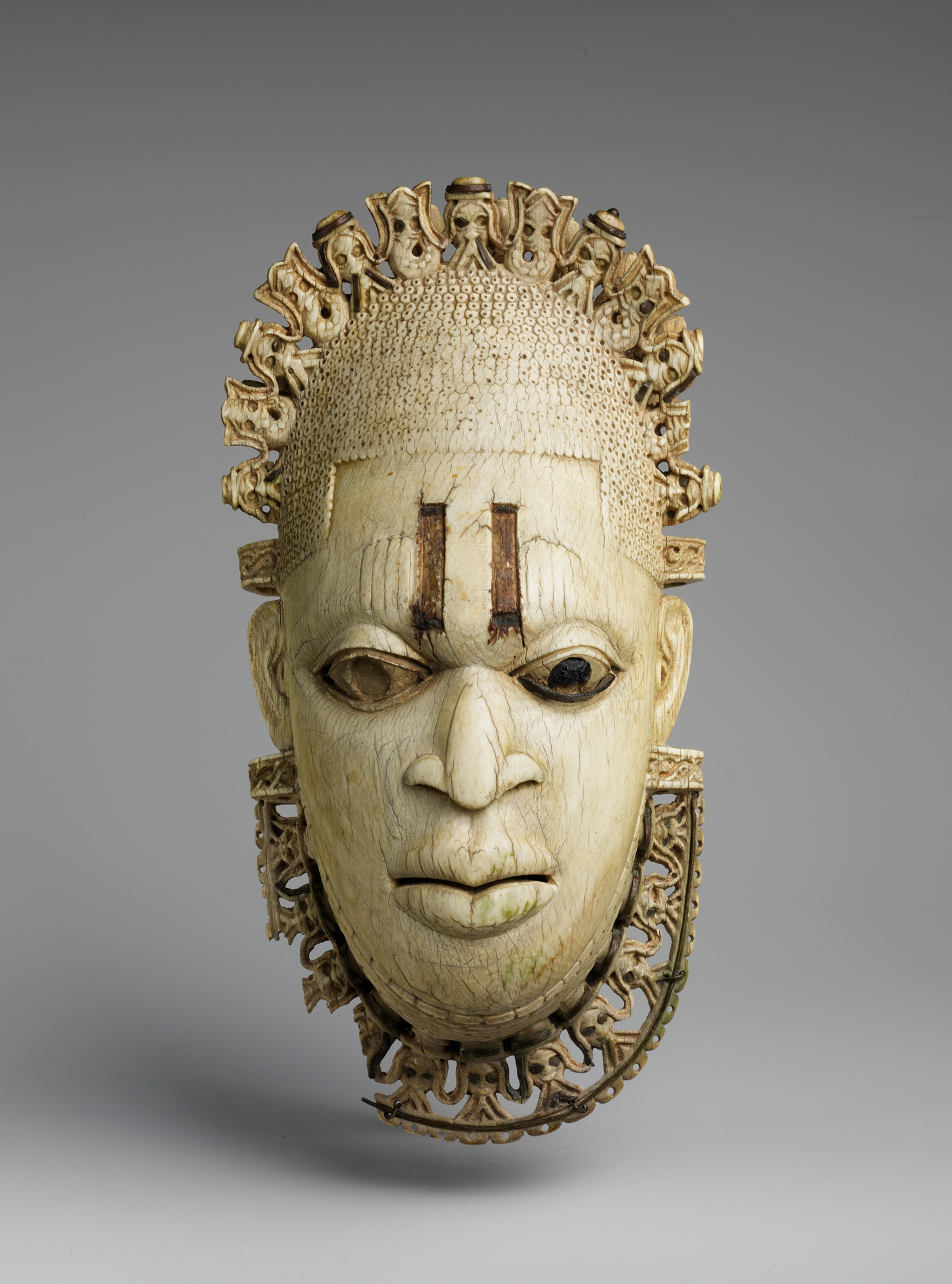A replica of the pendant mask of the Edo Queen Mother of Nigeria: Iyoba, created in the 16th century. The mask is chosen as the emblem of FESTAC 77, the second World Festival of Black and African Arts and Culture held in Lagos, Nigeria in 1977. This photo was given to Wikimedia Commons as part of a project of Metropolitan Museum of Art. (CC0 1.0)
Editor’s note: Originally posted on Yaba Leftthis article is republished here with permission.
The city of Lagos has always stood out as the cultural capital of Nigeria. Given its maritime location, and its position as the seat of political power in colonial and post-colonial times, it was only a matter of time for the city to develop and reach its true cosmopolitan potential: a place where people, ideas and culture constantly collide.
The colonial stories of pre-colonial musical forms are either rare or casual. The only fluid flow of information occurs during barter between Western sailors and our ancestors, allowing instruments like guitars and horns to enter our own music and culture.
Our knowledge of the roots of this musical culture remains rudimentary, as its constant change is a tradition that predates the advent of technology. Precursor musical forms like the sakara, asiko, apala, and agidigbo still exist today, played by older, aging musicians who often pass them down from generation to generation. However, the music high life and juju have been widely studied and documented, having peaked in popularity at a crucial moment in post-colonial history, a time of unbridled optimism, and because it was also within reach of technology.
The appearance of nightclubs in Lagos dating back to colonial times
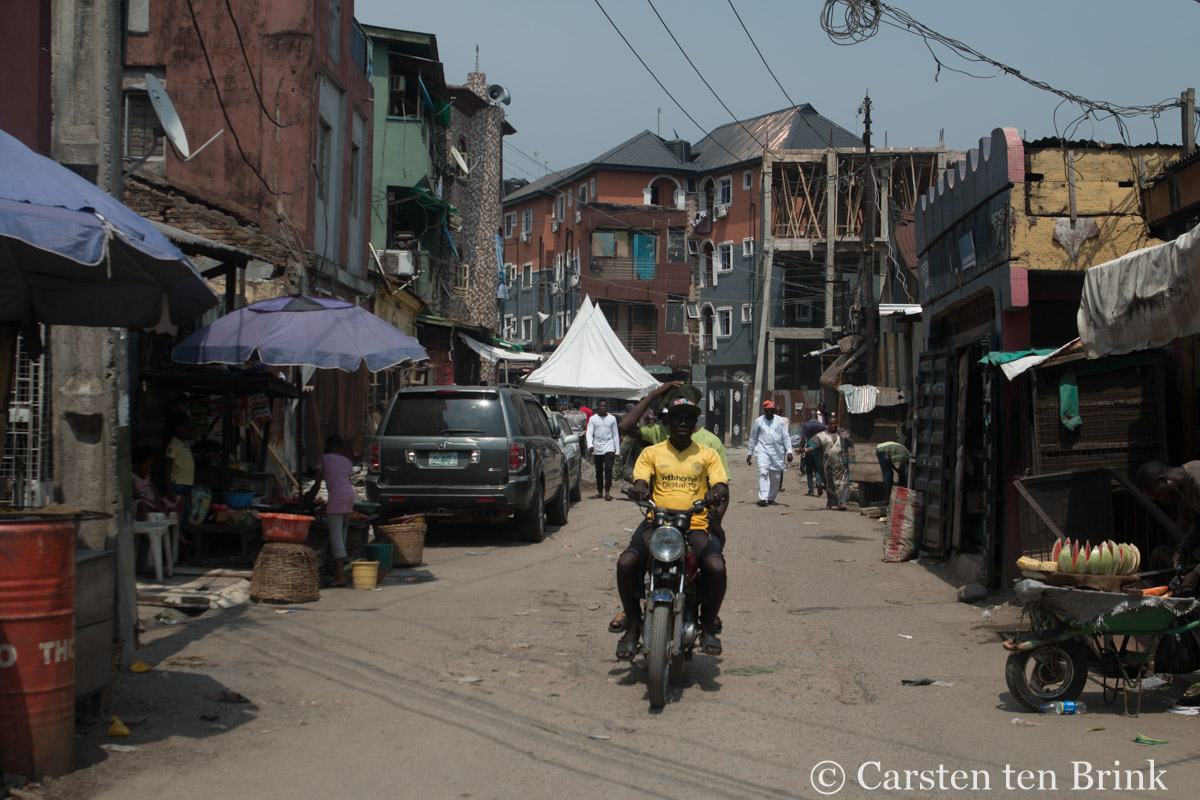
The Campos neighborhood in Nigeria’s cultural and economic center in Lagos was home to freed slaves returning from Brazil to Africa, often with Portuguese names and followers of a Christian religion. Today, the district is a bustling, commercial, and busy area of the city. Image source: Carsten ten BrinkNovember 11, 2018, (CC BY-NC-ND 2.0).
At the end of the 1940s, when the colonial presence was strong in Lagos, it resembled any European city with a prosperous nightlife. The interactions between the natives and the whites result in the adoption of the culture of the latter. Lagos nightclubs are dynamic and synonymous with profit for the various players in its ecosystem (musicians, bands, promoters, restaurateurs and drug traffickers) who allow it to function properly.
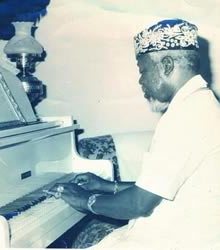
Bobby Benson (April 11, 1922 – May 14, 1983) was a Nigerian artist and musician. Source imagician: Aymatth2 via Wikimedia Commons
Many testimonies refer to Bamboo Pea Coata nightclub owned by Bobby Benson, a dynamic cultural entrepreneur and impresario of his time. He and his wife Cassandra lead a theater troupe which then serves as nocturnal entertainment. He also created the Jazz Orchestra Band, which later became a springboard and offered its tutelage to the greatest highlife musicians in Nigeria. At the time, the group played classical ballroom dance music for its elite clientele: fox-trot, cha-cha and swing. They also play local tunes.
It was not until the 1950s that a new wave of sound arrived in Nigeria, passing through Ghana. There was the oft-cited West African tour, undertaken by ET Mensah, a Ghanaian trumpeter, and his Tempos Band, which showed Nigerian musicians the possibilities of playing African-inspired rhythms with Western instruments. There are also accounts of a trip to Ghana undertaken by Bobby Benson and his group to give concerts there. The origins of the name ‘highlife’ from Ghana, suggest that the musical genre was first established there.
It can be taken from this era that as Nigeria progressed towards independence, highlife music grew in popularity. Nightclubs and hotels usually host resident fashion bands who played most nights of the week and on Saturday nights. The last Fridays of the month were particularly important.
Musicians in bands put on their chic costumes and provide music for popular venues around the city, including Bobby Benson’s Caban Bamboo, the Gondola Bar (which still exists, despite a change in name and ownership) and the Ambassador Hotel, the latter two located in Yaba and owned by to a Lebanese.
Many of these venues and concert halls have now disappeared, turning into residential buildings and another church auditorium. Gone are the days when their cavernous halls were synonymous with dance, music and intimate liaisons. Highlife musicians were popular with women, with women occupying a valuable role in this genre of music, particularly as muses and inspiration to musicians. Songs like ” Sawale » of Rex Lawson come to mind, a humorous dance piece that used the colloquial term “waka waka baby” to refer to the sex workers of the time. Several decades later, Flavor N’bania used this term in his rhythmic hit titled “Nwa Baby (Ashawo Remix)”.
The Golden Age: The 1960s
The golden age of the 1960s interweaves nostalgia for an era of independence and nationalistic optimism, with the ever-popular highlife dance music. Eclipsing calypso, ballroom dancing, swing and cha-cha, it became the soundtrack of the era.
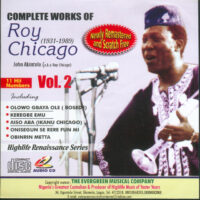
Roy Chicago (1931-1989) album cover “Highlife Series”
All over Nigeria, music is played in hotels and nightclubs until late at night. Charismatic bandleaders with fancy band names rage. Roy Chicago (born John Akintola Ademuwagun) and the Rhythm Dandies. victor olaiya and the Cool Cats. Fela Ransome-Kuti and the Koola Lobitos. Rex Lawson and His Mayor’s Band. Chris Ajilo and the Cubanos. Unfortunately, this optimism is short-lived. The very recent republic fell into chaos, resulting in a civil war that left millions displaced and dead.
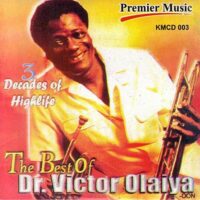
Victor Olaiya’s ‘Papingo Davalaya’ album (1930-2020), released in 1986 on Premier Records.
Immediately after the Biafra War, the popularity of highlife music began to decline. A significant number of its musicians come from the east of the country and the war inadvertently moved them from Nigeria to Biafran territory, which declared itself independent from Nigeria from 1967 to 1970. We can also note the rise of soul music and American funk as well as growing security concerns that hamper nightlife and nightlife.
After the Civil War, highlife struggled to stay relevant. Juju music, a variant of highlife “Palm-wine” gaining popularity in the southwestern Nigeria. Composed of a slew of musicians strumming the guitar, and accompanied by catchy harmonies, the subgenre quickly became popular among the Yoruba party elite.
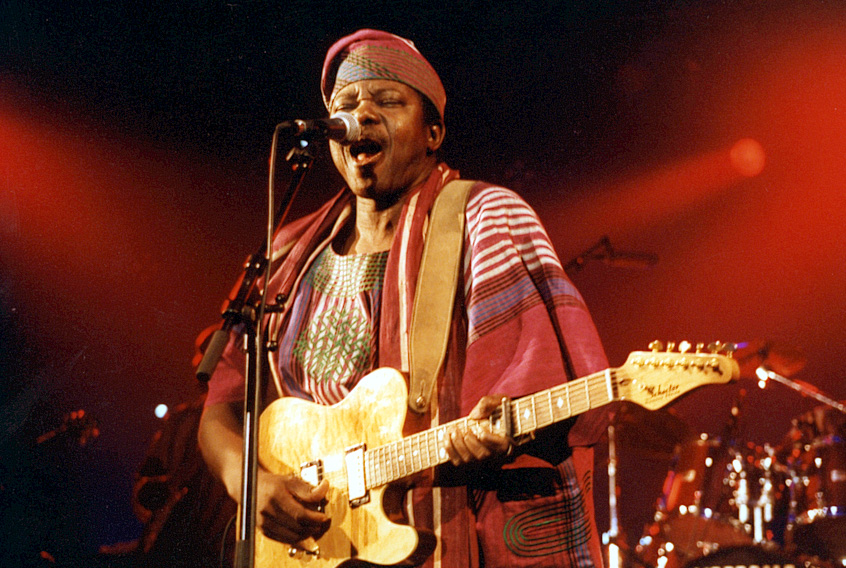
King Sunny Ade (born Sunday Adeniyi Adegeye), Nigerian jùjú singer, composer and multi-instrumentalist. Image: master_xpo via Wikimedia CommonsSeptember 12, 2005 (CC BY 2.0).
Regardless of how slowly the juju fills the void left by the apala music (a musical genre dating from the 1930s, built around percussion, and originating from the Yoruba people of southwestern Nigeria), the impact of virtuoso artists such as the visually impaired musician Kokoro (born Omoba Benjamin Aderounmu), Tunda King, Avinde Bakare, Ojoge Daniels, OJ Arabaand IK Dairo was not fully felt until the dominance of two musicians: Chief Commander Ebenezer Obey and King Sunny Ade.
Several fusions such as Afro-rock, Afro-soul and Afro-funk are also popular with younger audiences. The 1970s would be defined by an oil boom in Nigeria, and the country, which had just suffered a major setback following an almost three-year-long civil war, showed resilience in its efforts to embrace a cheerful disposition, and move forward.
In 1977, Nigeria hosted the second World Festival of Black and African Arts and Culture (FESTAC). World famous artists then concentrated in Lagos, Stevie Wonder and James Brown, among others.
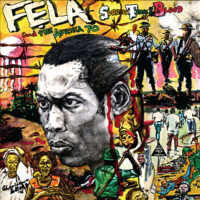
“Sorrow Tears And Blood” by Fela Anikulapo-Kuti
Fela Anikulapo-Kuti, who was initially part of the FESTAC committee, boycott the program. But his nightclub, Afrika Shrine, becomes an essential place for musicians from all over the world who come to Lagos at the expense of FESTAC.
Fela Kuti’s favorite genre of music, Afrobeat, is becoming a fixture on the streets of Lagos, despite his incendiary lyrics putting him at odds with the political class. Its Afrika Shrine, both a nightclub and a spiritual nirvana of Pan-Africanism, adds a unique dimension to Lagos nightlife. It provides an ecosystem of restaurateurs, dealers and sellers of all kinds.
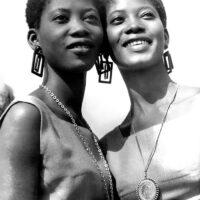
The Lijadu Sisters (Taiwo and Kehinde Lijadu) at Nigeria’s National Stadium, Lagos (1970). Image: Pade Aladi via The Lijadu Sisters Facebook group
The 1970s were marked by dynamic experimentation with sounds and musicians like Fela Kuti, Segun Bucknor, as well as the Lijadu Sisters.
The style of monozygotic twins Lijadu Sistersis a fusion of jazz, reggae and the more traditional waka style of incantatory call and response. Their music imposes itself and they quickly become pioneers among the female musicians who upset the stereotypes of the time. Musicians are then often considered idle and these prejudices are particularly harsh when they are brought to bear on women.
Emerging from a dark colonial narrative, Nigerian music established itself in the mid-twentieth century, shining in its self-reliance, and firmly rooted in the revival of Pan-Africanism of the 1970s. This evolution was conceived, carried out and effectively carried out in Lagos, the cultural capital of Nigeria.
Read it second part of this article here.
Nigeria: History of Music in Lagos, from the Colonial Era to the 1970s

